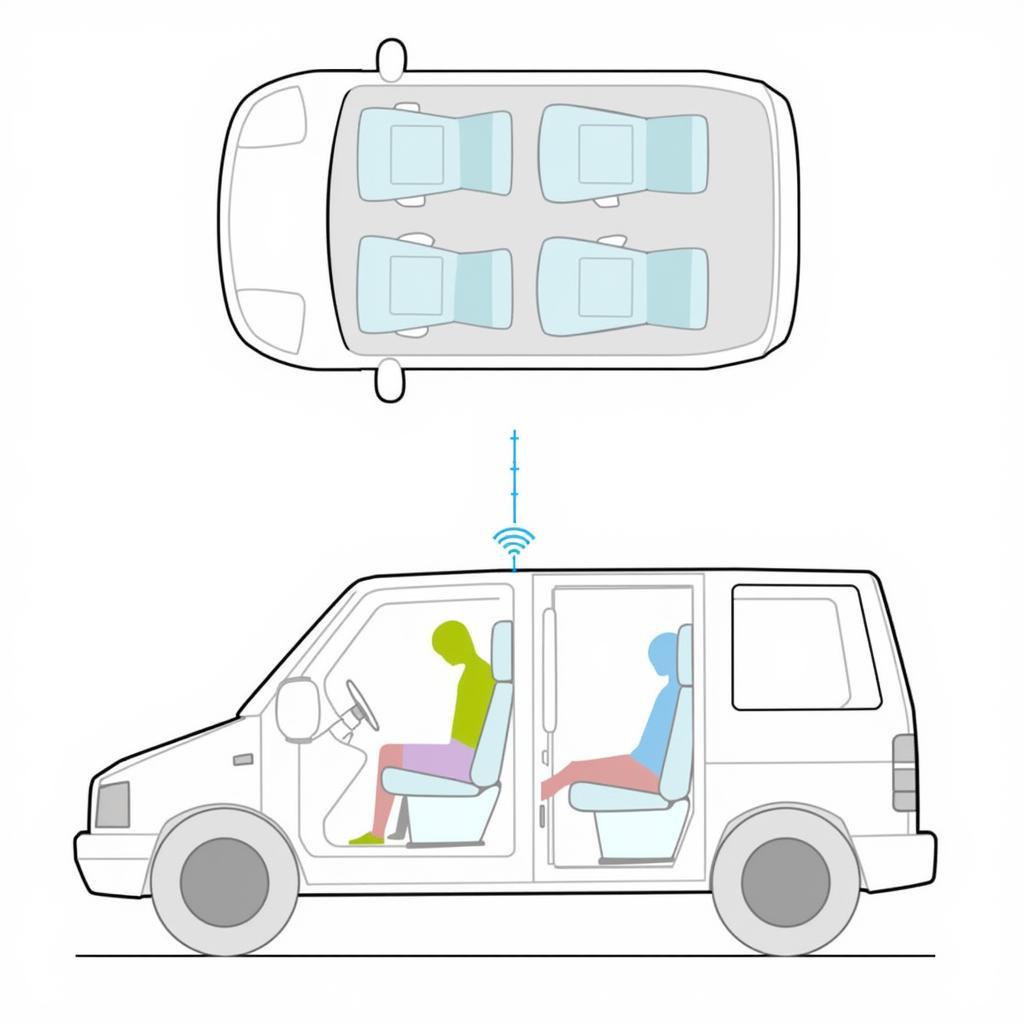A dead key fob battery can leave you stranded. Luckily, replacing a Jeep key fob battery is a simple task you can do yourself in minutes. Whether you drive a Grand Cherokee, Wrangler, or Compass, this guide will walk you through the steps.
What You’ll Need to Replace Your Jeep Key Fob Battery
Before you get started, gather the following:
- Replacement battery: Check your owner’s manual or the back of your existing battery for the correct type. Most Jeep key fobs use a CR2032 3V lithium battery.
- Small flat-head screwdriver or a similar tool for prying.
- Optional: A small tray or container to hold the screws and battery.
Jeep Key Fob Battery Replacement: A Step-by-Step Guide
Follow these straightforward steps to replace the battery in your Jeep key fob:
- Locate the key fob’s battery compartment. This is usually on the back of the fob. Some fobs have a small release button or switch.
- Open the battery compartment. If your fob has a release button, press it and the compartment should pop open. If not, carefully insert the flat-head screwdriver into the notch and gently pry the two halves of the fob apart.
- Remove the old battery. Note the position of the positive (+) and negative (-) sides of the battery.
- Insert the new battery. Make sure the positive (+) and negative (-) sides match the orientation of the old battery.
- Close the key fob. Align the two halves of the fob and press them together until you hear a click. If your fob has a release button, ensure it engages properly.
Testing Your New Jeep Key Fob Battery
Once the new battery is in place, test the key fob by pressing the lock, unlock, and panic buttons. If the buttons function correctly, you’ve successfully replaced your Jeep key fob battery.
Troubleshooting Tips
If your Jeep key fob still doesn’t work after replacing the battery, try these troubleshooting tips:
- Check the battery orientation. Ensure the positive (+) and negative (-) sides are installed correctly.
- Clean the battery contacts. Use a cotton swab and rubbing alcohol to clean the battery contacts inside the fob.
- Try a different brand of battery. Batteries from different manufacturers may have slightly different dimensions.
- Consult your owner’s manual or a professional. If you’re still experiencing issues, refer to your owner’s manual for specific instructions for your Jeep model, or contact a qualified automotive technician for assistance.
Why It’s Important to Replace a Dying Key Fob Battery Promptly
You may notice your key fob battery is dying if the car doesn’t respond as quickly to button presses or if you need to be closer than usual for the fob to work. Replacing the battery immediately when you notice these signs can prevent you from getting stranded.
Jeep Key Fob Battery Replacement FAQs
How often should I replace my Jeep key fob battery?
Most Jeep key fob batteries last 3 to 5 years, depending on usage and environmental factors.
Can I replace my Jeep key fob battery myself, or do I need to go to a dealership?
Replacing a Jeep key fob battery is a simple task you can do yourself. You don’t need any special tools or expertise.
Can a dead key fob battery drain my car battery?
No, a dead key fob battery will not drain your car battery.
jeep grand cherokee key fob battery
What type of battery does my Jeep key fob use?
Most Jeep key fobs use a CR2032 3V lithium battery. Consult your owner’s manual or look at your existing battery to confirm.
My Jeep key fob is damaged. Can I still replace the battery myself?
If your Jeep key fob is damaged, it’s best to consult a professional. They can assess the damage and recommend the best course of action, which may include repairing or replacing the fob.
Conclusion
Replacing the battery in your Jeep key fob is a quick and easy DIY task that can save you time and money. By following these simple steps and keeping a spare battery on hand, you can ensure you’re always prepared to get back on the road. However, if you encounter any difficulties or are uncomfortable performing this task yourself, don’t hesitate to contact a qualified automotive technician for assistance.


